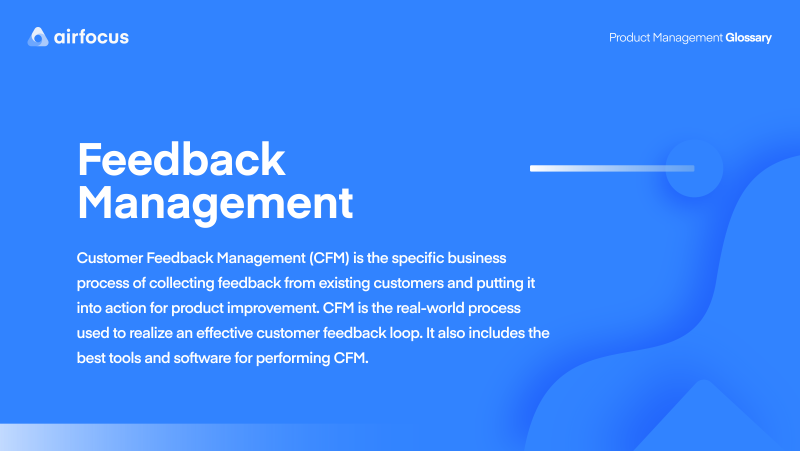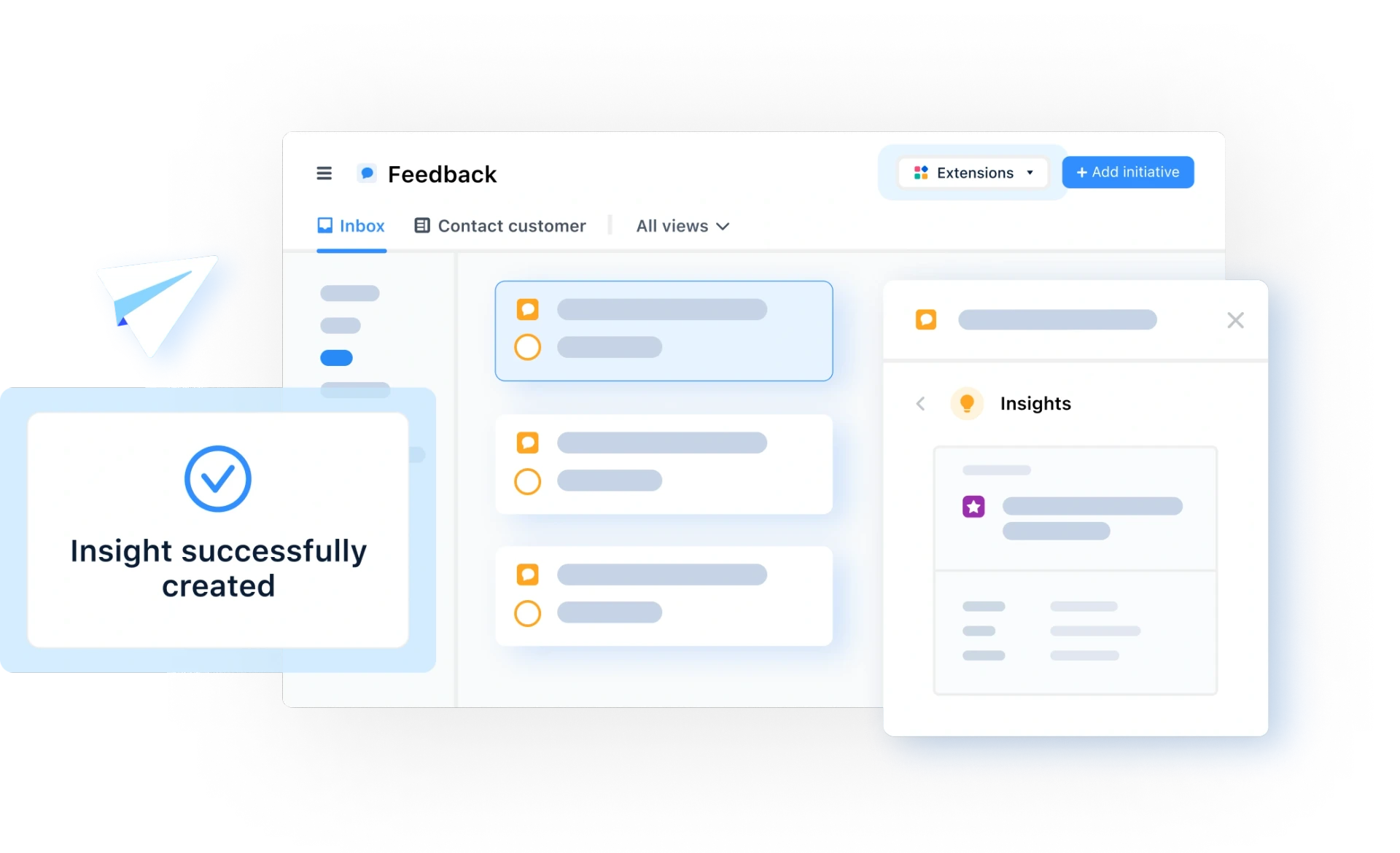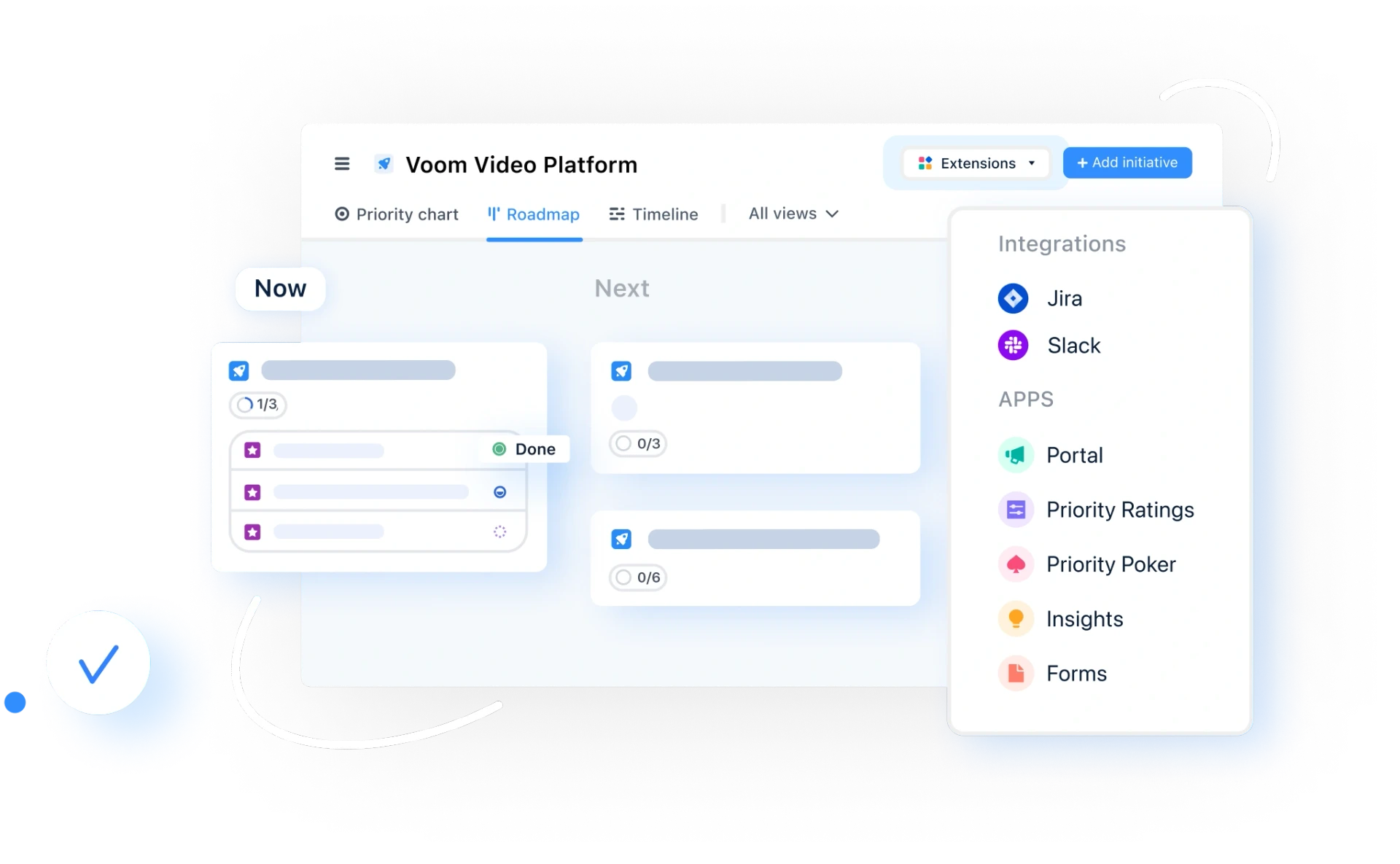Feedback Management
What is a feedback management system?
What is a feedback management system?
Customer Feedback Management (CFM) is the business process of collecting customer feedback to help improve product development. Includes the best tools and software for performing CFM.
Wouldn’t it be great to take the guesswork out of product development?
Well, if you’re a product owner or product manager, you’ll want to know about Customer Feedback Management, or CFM.
To make great CFM happen, businesses use a feedback management system, which is the specific blend of business processes which enables the customer feedback loop.
Download Now: Get our 5-minute guide on Why Insights Are Essential and How to Source Them
It’s the nuts and bolts of requesting, collecting, analyzing, then closing the loop on, feedback directly from customers. Depending on the business, the feedback management system can be a single one-and-done platform, or a daisy chain of other systems linked together.
When done right, using a feedback management system of this kind improves customer satisfaction, reduces churn, boosts revenue, and perhaps most importantly, empowers customers in the knowledge they’re really being listened to.
How can we improve our feedback management and why?
Most companies are already doing feedback management of one sort or another, but how many have really formalized the process?
A survey via email or the occasional NPS pop-up in-app might yield a few choice insights, but, for the best results, brands need to deploy a Customer Feedback Management system.
By doing so, they can establish bulletproof processes that ensure all team members know how they’re collecting feedback, why they’re doing it, where it goes, and what changes it creates.
So how can you improve your feedback management? Here are a few pointers to get you started:
Define your end goal. Ask your product team specifically which type of feedback would be most helpful to them. Do they want to know what works well, or what works badly?
Be clear about the type of feedback you want. Some customers will use a feedback management system to submit complaints, which you might value, but you still want to be sure you’re getting what you need. Feature requests? Bug reports? Bad user interface design? Make it clear for the customer giving feedback.
Understand what you’ll do with feedback. It’s very easy to collect customer feedback, but what are you going to do with it? Critical insights can be lost if you don’t put a system in place to categorize and organize the data you collect.
Establish a workflow for actioning feedback. There’s nothing worse for a customer than to be promised their feedback will be taken into consideration and then hearing… crickets. Ensure you close the loop on all feedback - even if nothing is actioned - by establishing a complete end-to-end workflow for feedback.
At what stage of the product journey should you gather feedback?
It’s essential to gather feedback at every stage of the product journey. Collecting feedback at different stages helps improve customer retention rates and allows you to identify and overcome obstacles throughout the journey.
However, the most important time to gather feedback is after customers interact with your product. This gives you the opportunity to explore new ideas and innovations to improve your product in a way that aligns with your customer’s pain points and preferences.
Post-use customer feedback is especially helpful when creativity and inspiration are lacking. It’s also beneficial when the feedback comes from long-time users because it can act as a driver for new product development down the road.
Introduction to feedback management tools
Feedback management tools are software solutions that help businesses collect, analyze, and act upon customer feedback. These tools are crucial for enhancing customer experience, improving product quality, and boosting overall business performance.
Feedback management tools offer a variety of benefits for businesses of all sizes, including:
Improved communication with customers and teams
Feedback management tools allow businesses to collect and manage customer feedback more efficiently. They enable companies to respond to customers in real-time, addressing concerns and providing solutions. Feedback management tools can also help businesses foster better team communication by streamlining the feedback collection process and providing a centralized platform for analysis and discussion.
Better understanding of customer needs
Businesses can better understand their customer's needs and expectations by collecting and analyzing customer feedback. Feedback management tools provide a wealth of data that businesses can use to identify patterns, trends, and areas for improvement. This information can inform product development, customer service, and other business decisions.
Helps you build user-centric products
Feedback management tools help businesses develop truly user-centric products. By collecting customer feedback at every stage of the product development process, businesses can ensure that their products meet the needs of their target audience. This can lead to higher customer satisfaction rates and greater customer loyalty.
Helps you plan for the future
Feedback management tools can also help businesses plan for future products, features, and services. By collecting feedback on existing products and services, companies can identify areas for improvement and develop new offerings that address customer needs. This can help you stay ahead of the competition and drive growth over the long term.
How to choose the right feedback management tool
Choosing the right feedback management tool is crucial to ensure you receive valuable insights from your customers and stakeholders. Various tools are available in the market, each with unique features and benefits. Here are some tips to help you choose the right feedback management tool for your business.
Check reviews
Much like you would seek feedback from your customers, you should seek feedback from other customers when deciding on a feedback management tool. Checking customer reviews for your platform of choice will give you an idea of the pros and cons of each tool, as well as the level of customer support and overall satisfaction of users. Websites like G2, Capterra, and Trustpilot can provide a good starting point.
Consider integrations
There’s little value in selecting a feedback management tool that doesn’t gel with your current workflow. When researching potential platforms, check that they can integrate with the systems you already use. This will make it easier to manage your feedback and improve collaboration among team members.
Pricing
With so many different platforms offering a vast range of features, pricing is a little all over the place. Many feedback management tools offer a range of plans, including free or low-cost options, so be sure to compare prices and features carefully to find the best fit for your budget. Make sure to look for a platform that isn’t bundling lots of features you will never use under the guise of “value.”
Feature-rich
Look for a platform with valuable features like roadmapping, templates, prioritization features, and other functionalities that can help you manage your feedback more efficiently. At airfocus, we offer a branded Portal for your business and our Insights tool to keep your feedback in one place.
List of modern tools for feedback management
Now that you have a better understanding of what feedback management is, let’s turn our attention to exactly how you make it happen in practical terms.
So, in no particular order, here are the 5 most popular tools for feedback management today:
airfocus is a complete solution for managing customer feedback and then feeding it directly into the product roadmap. Built with a simple modular approach, airfocus even allows users to share custom roadmaps based on customer feedback 一 so they can really see their suggestions in action.
Hotjar Surveys is an advanced surveying tool available as part of the Hotjar heatmap tool. It allows users to send cross-device surveys with multiple question formats and reporting options.
Survicate is a feedback management tool with built-in NPS features. It can be deployed across websites, web apps, and mobile apps, as well as via links or email.
SurveyMonkey is one of the most well-known survey tools, offering comprehensive design options, mass emailing, as well as advanced features such as sample selection and bias elimination.
UserVoice is an all-in-one customer feedback management platform that can be enabled on almost any website, app, or mobile app. Importantly, it also offers a robust back-end data analysis suite for making sense of customer feedback.
Enterprise vs. Customer Feedback Management
You might have heard the term ‘Enterprise Feedback Management’, or EFM, being used almost interchangeably with Customer Feedback Management, and the two are very similar in concept 一 but they’re also different.
Allow us to explain.
EFM is a term that refers to the holistic view of a company or organization. It’s usually used to refer exclusively to surveys as a feedback tool and has a much wider scope than CFM. As the names suggest, EFM is focused on the business; its employees, its organizational structure, and its products. Whereas CFM is focused exclusively on the customer experience.
Modern thinking holds that CX is what really matters and that CFM offers the right breadth of feedback mechanisms to deliver those insights.

General FAQ

Glossary categories
All product feedback in one place

Experience the new way of doing product management








